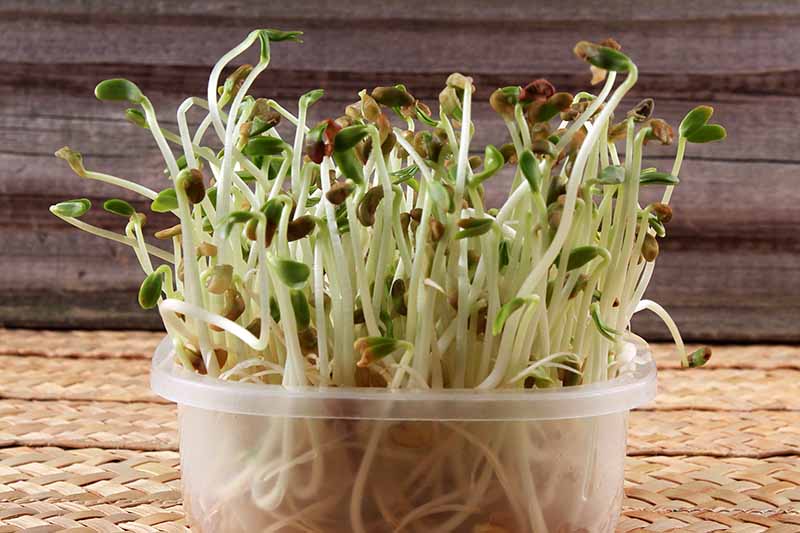How to grow Fenugreek at home, Fenugreek, with its distinctive flavor and nutritional benefits, is a versatile herb that can easily be grown at home. In this comprehensive guide on how to grow fenugreek at home, we’ll delve into the step-by-step process of cultivating fenugreek in your own garden or indoor space.
Understanding Fenugreek:
Fenugreek (Trigonella foenum-graecum) is an annual herb native to the Mediterranean region and South Asia. It belongs to the Fabaceae family and is prized for its edible leaves, seeds, and sprouts, which are commonly used in culinary dishes and traditional medicine. Fenugreek has a slightly bitter taste with hints of sweetness, making it a popular ingredient in Indian, Middle Eastern, and Mediterranean cuisines.

How to grow Fenugreek at home, Selecting Fenugreek Seeds:
When growing fenugreek at home, it’s essential to start with high-quality seeds to ensure successful germination and healthy plant growth. Look for fenugreek seeds from reputable suppliers or nurseries that specialize in organic and heirloom varieties. Opt for seeds that are fresh, plump, and free from signs of damage or decay, as these are more likely to produce vigorous and productive plants.
Preparing the Growing Environment:
Before we learn how to grow Fenugreek at home we should have knowledge about growing condition. Fenugreek thrives in well-drained soil with a neutral to slightly acidic pH and requires ample sunlight to flourish. Before planting, prepare the growing environment by selecting a sunny location with fertile, loamy soil. If planting in containers or pots, choose a well-draining potting mix enriched with organic matter such as compost or aged manure. Ensure adequate drainage to prevent waterlogging, which can lead to root rot and other issues.
Planting Fenugreek Seeds:
Fenugreek seeds can be directly sown into the ground or started indoors in seed trays or pots. If sowing directly outdoors, plant the seeds about 1/4 inch deep and space them 2 to 3 inches apart in rows or clusters. Water the seeds gently after planting and keep the soil consistently moist until germination occurs, typically within 7 to 10 days. If starting seeds indoors, plant them in seed trays filled with moist potting mix and place them in a warm, sunny location.

Caring for Fenugreek Plants:
Once germinated, fenugreek plants require minimal care to thrive. Water the plants regularly to keep the soil evenly moist but not waterlogged, especially during hot and dry periods. Avoid overwatering, as this can lead to root rot and other problems. Mulching around the base of the plants can help conserve moisture, suppress weeds, and regulate soil temperature.
Fertilizing Fenugreek Plants:
Fenugreek is a relatively low-maintenance herb that doesn’t require heavy fertilization. However, you can apply a balanced, water-soluble fertilizer diluted to half strength every 4 to 6 weeks during the growing season to promote healthy growth and development. Avoid over-fertilizing, as this can lead to excessive leafy growth at the expense of seed production.
Harvesting Fenugreek Leaves:
Fenugreek leaves, also known as methi, can be harvested when the plants reach a height of 6 to 8 inches and have developed several sets of true leaves. Use sharp scissors or pruning shears to snip off individual leaves or cut the entire plant down to ground level, leaving about 1 inch of stem intact. Fenugreek leaves are best harvested in the morning when they are fresh and tender, before the sun’s heat causes them to wilt.
Using Fenugreek Leaves in Cooking:
Apart from just learning “how to grow fenugreek at home,” it’s essential to understand its versatile uses in cooking.Fresh fenugreek leaves add a distinctive flavor and aroma to a wide range of culinary dishes, including curries, stews, salads, and soups. They can be used as a flavorful herb or cooked as a leafy green vegetable. Fenugreek leaves are rich in vitamins, minerals, and antioxidants, making them a nutritious addition to any meal. To preserve their freshness and flavor, store fenugreek leaves in the refrigerator in a plastic bag or container for up to one week.
Harvesting Fenugreek Seeds:
When learning how to grow fenugreek at home, understanding the harvesting process is crucial. Fenugreek seeds can be harvested when the plants begin to turn yellow and the seed pods turn brown and dry. Allow the seed pods to mature fully on the plant before harvesting to ensure maximum seed viability. Use sharp scissors or pruning shears to cut the seed pods from the plant, then spread them out in a single layer on a clean, dry surface to finish drying. Once dry, thresh the seeds from the pods and store them in a cool, dry place in an airtight container for future use.

Growing fenugreek at home is a rewarding and satisfying experience that allows you to enjoy the fresh flavors and nutritional benefits of this versatile herb. By selecting high-quality seeds, preparing the growing environment, planting with care, and providing proper care and maintenance, you can cultivate healthy fenugreek plants in your own garden or indoor space. Whether used in cooking, medicine, or as a culinary herb, fenugreek adds a unique flavor and aroma to a wide range of dishes and enhances the overall enjoyment of process of “How to grow Fenugreek at home”.



